he arrival of spring brings the start of the first harvest season for green tea leaves, called “shin-cha” or “new tea.” The fresh and clear aroma of shin-cha is a specialty that can only be enjoyed for a short time each year.
How is shin-cha produced and delivered to us for our enjoyment?
In 2022, the DIG THE TEA team will travel with Ryo Iwamoto, a tea ceremony master and CEO of Japanese tea startup “Tea Room,” to visit various tea plantations around Japan and discover the unique scenes of shin-cha production.
In mid-May, we visited “Maezuru Seicha” in Hioki City, Kagoshima Prefecture, and “Sageishi-chaen” in Miyazaki City, Miyazaki Prefecture.
Maezuru Seicha’s rare, iron pan roasted tea
Our first stop was Hioki City, which is located in the center of Kagoshima Prefecture. The city has a long history of tea culture and legend has it that warlord Shimazu Yoshihiro often held tea ceremonies here.
Kagoshima Prefecture is known for the production of deep steamed tea and we visited Maezuru Seicha, where they make the rare Kamairicha tea (iron pan roasted tea).
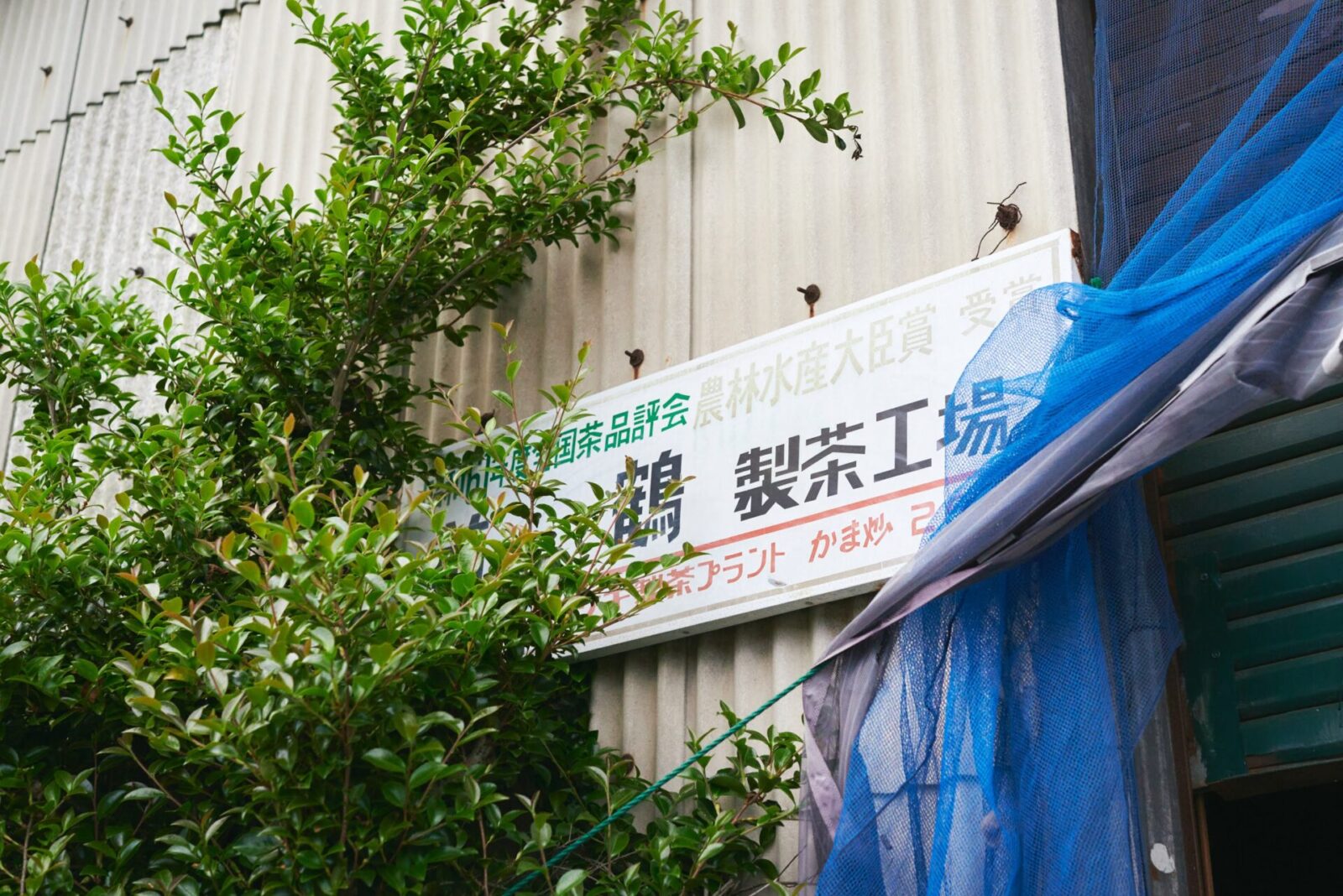
The history of Kamairicha is actually older than Sencha (steeped tea). It is said to have been introduced to Japan from China around the 15th century and it is now a rare tea that is only made in a few areas of Kyushu.
So what kind of tea is Kamairicha?
We spoke with Takashi Maezuru, the representative of Maezuru Seicha, to find out.
“Kamairicha is a kind of green tea that is similar to Sencha and Gyokuro tea. Sencha is made by steaming tea leaves to prevent oxidation, but as the name suggests, Kamairicha is made by roasting tea leaves in a hot iron pan to prevent oxidation and fermentation.”
Maezuru Seicha was founded in 1948 and Takashi Maezuru is the third generation to head the company that was founded by his grandfather.
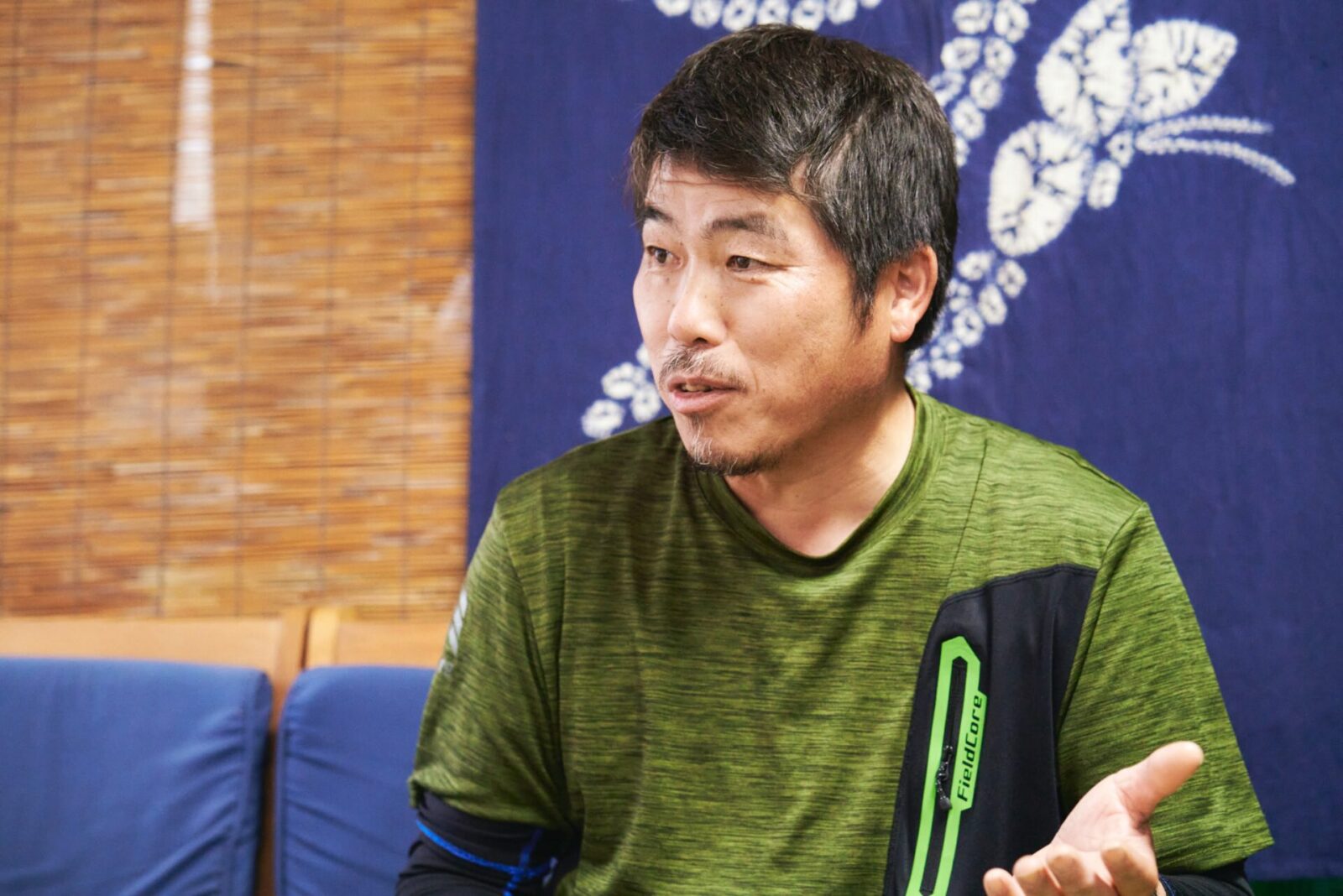
Kamairicha’s unique aromatic scent and refreshing flavor
Maezuru poured us a cup of the newest Kamairicha harvest as he said, “First you should give it a taste.”
When you look at the tea leaves, you can see that it is shaped differently from Sencha.
While Sencha leaves are rubbed into a needle-like shape, Kamairicha leaves are stirred on an iron pan to dry, so the tea becomes slightly rounded in shape.
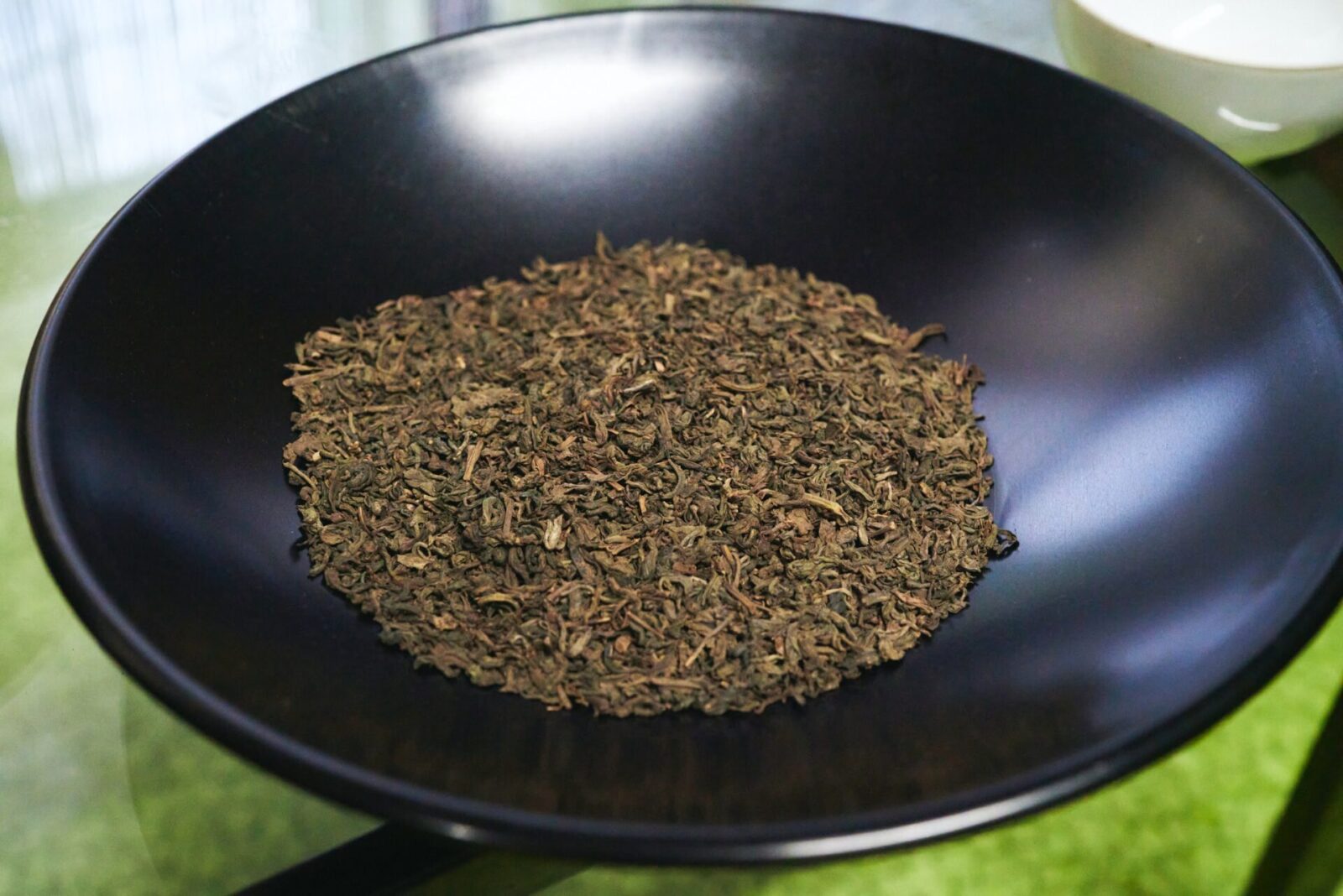
It is brewed with boiled water at a slightly higher temperature than other teas and its unique aroma, known as Kamaka (scent of iron pan), fills the air. The scent is somewhat similar to the familiar scent of Houjicha (roasted tea).

The brewed tea has a clear golden color. It is not as bitter or astringent as Sencha and has a mild flavor, inviting the drinker to have multiple servings.
After just one sip, we were intrigued and became an instant fan of the tea.
“Isn’t it delicious? My grandfather, who founded the company, really liked the refreshing and fragrant flavor of Kamairicha over Sencha, so we have been making Kamairicha exclusively ever since.”
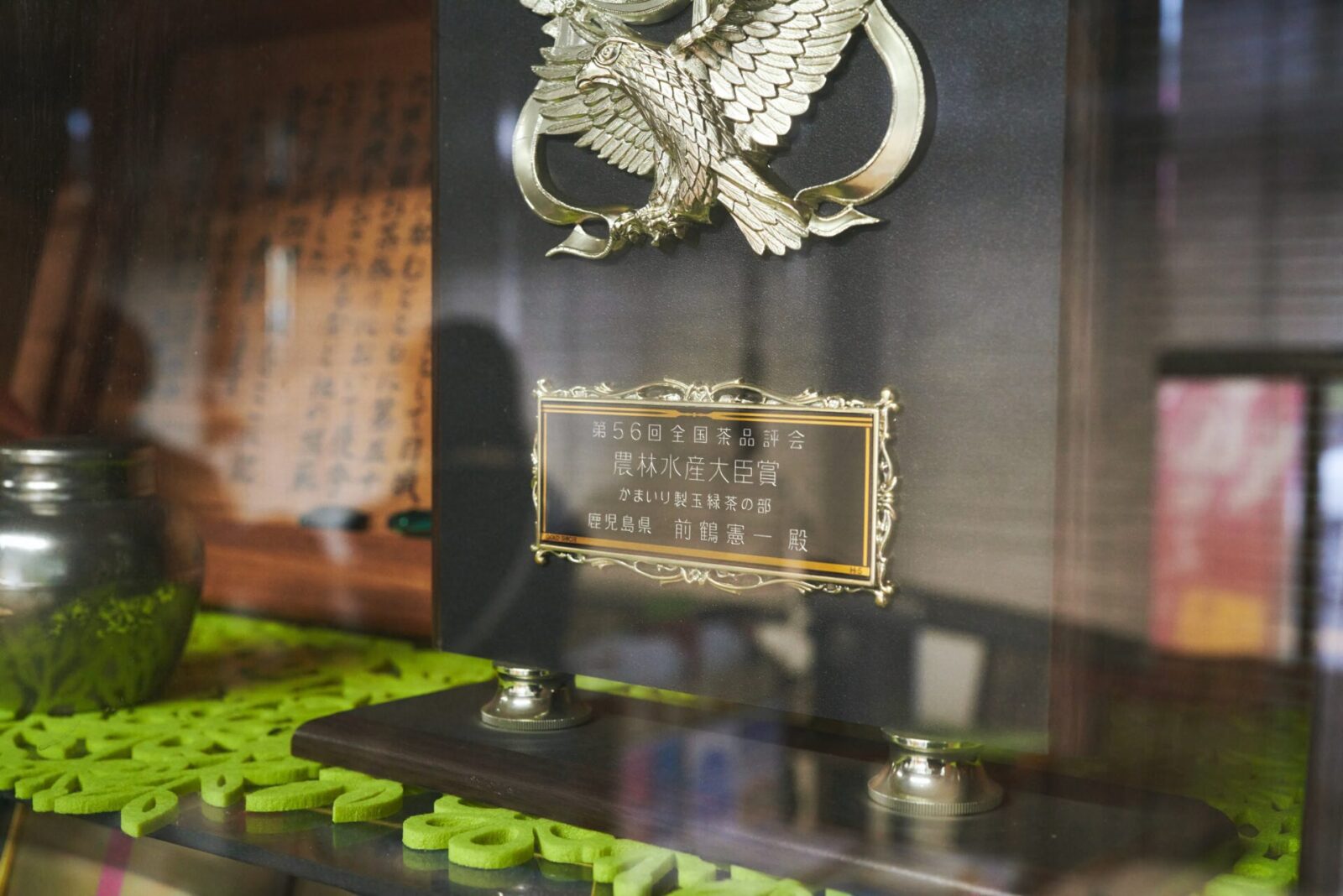
Expanding their product line with traditional roasting techniques
Maezuru Seicha grows about six varieties of tea, including a variety called “Saemidori,” at their JAS certified organic field.
One of their teas, “Benifuuki,” especially became popular about eight years ago as it contains an antiallergenic ingredient, methylated catechin, which is said to be effective against hay fever.
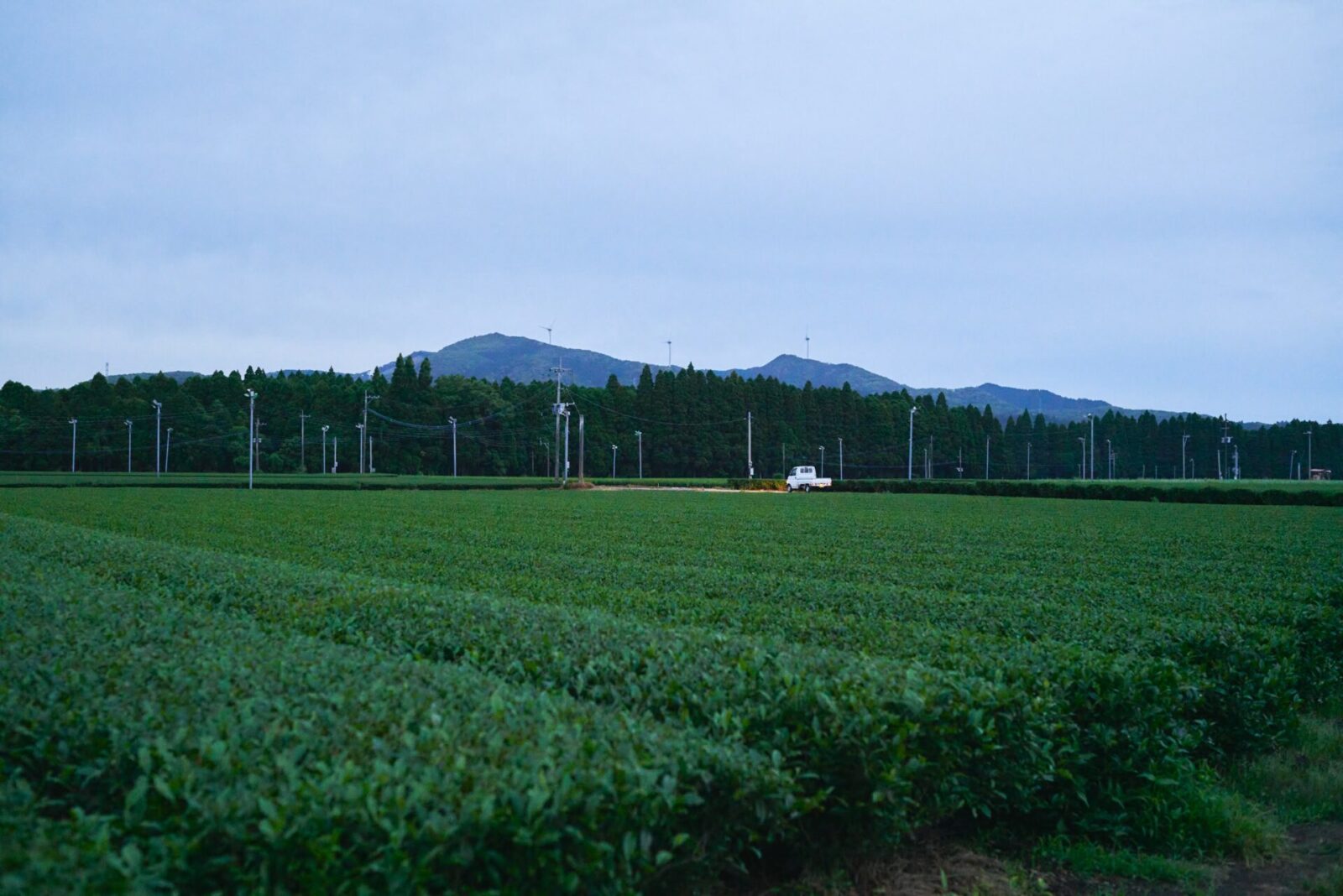
“Back then, many tea farmers converted most of their fields to grow Benifuuki, but after the boom passed, they reverted back to growing their original varieties.”
“Luckily, we were able to maintain our Benifuuki customers so we kept the variety and we have been able to make various tea products with it.”
Maezuru developed new products such as a black tea blended with Benifuuki and a Kamairicha and herb tea blend.
We tasted their “Gray Green” blend tea made with Kamairicha with orange peel, lemongrass, calendula, and other herbs.
After the initial fresh citrus aroma, the rich scent of the roasted Kamairicha travels through the nose and you can enjoy the various layers of scents. “Gray Green” is one of Maezuru Seicha’s most popular products.
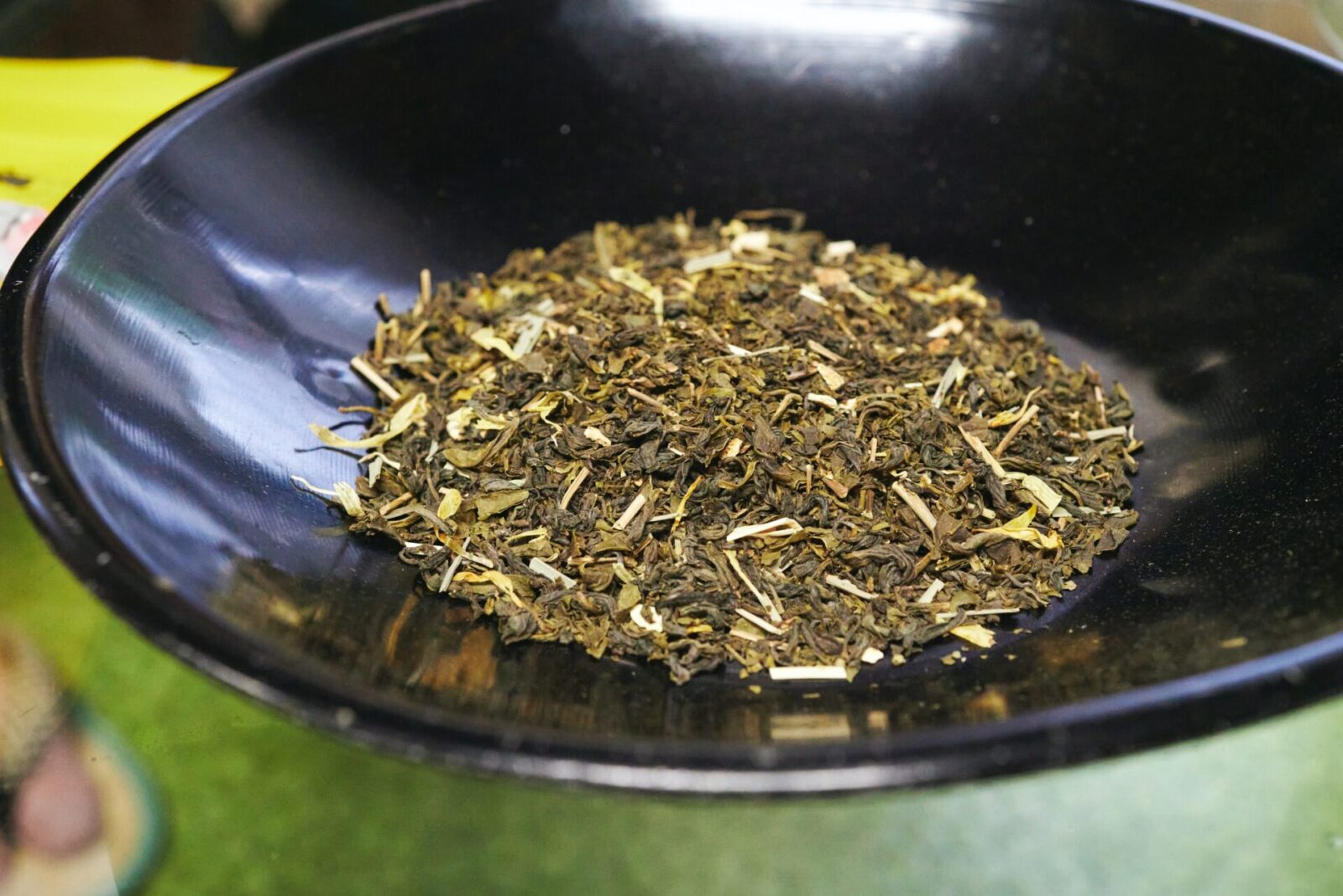
Maezuru hopes to share “various ways to enjoy tea” and has used the Kamairi roasting method to expand their tea’s possibilities and they create new products each year.
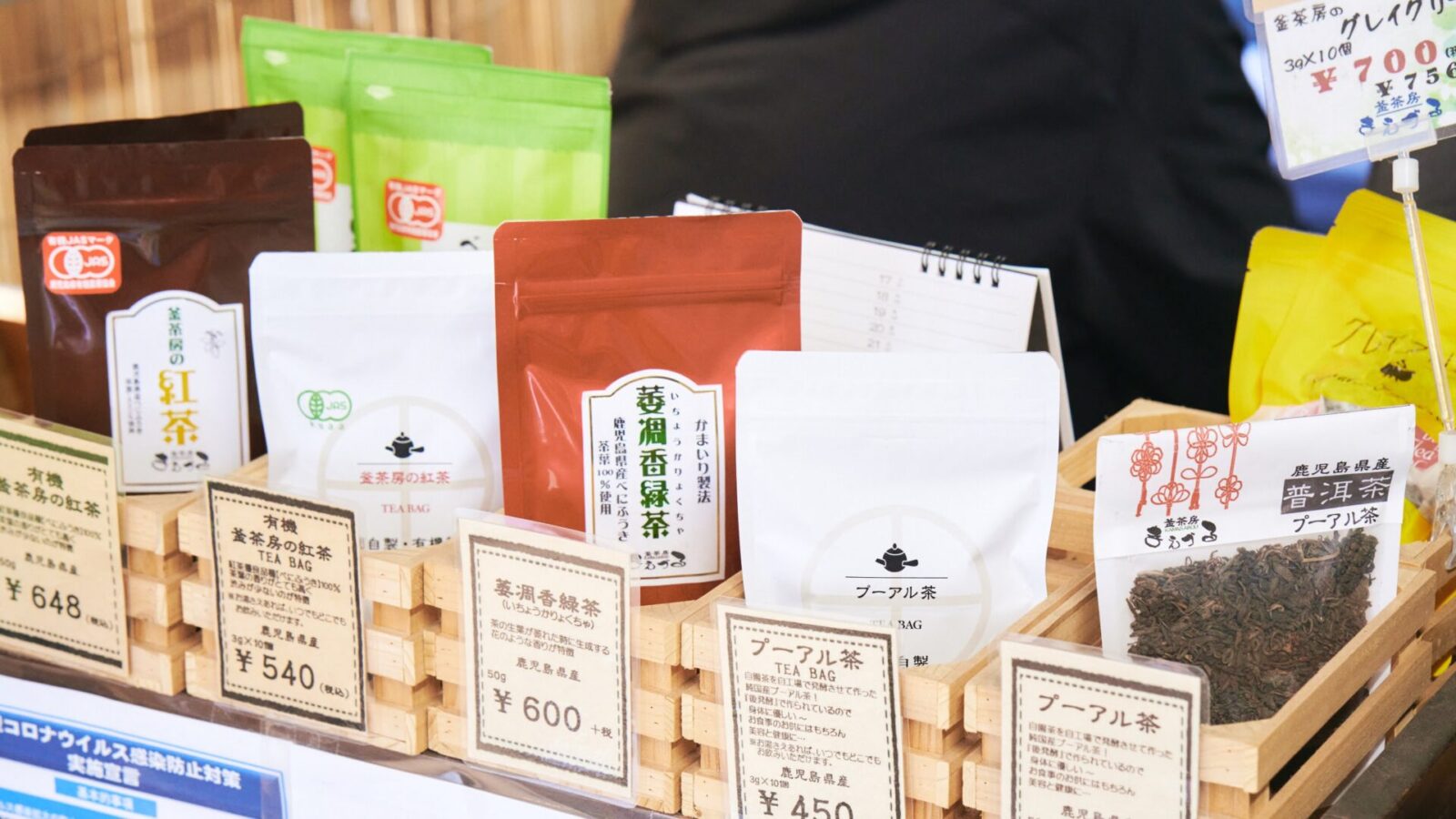
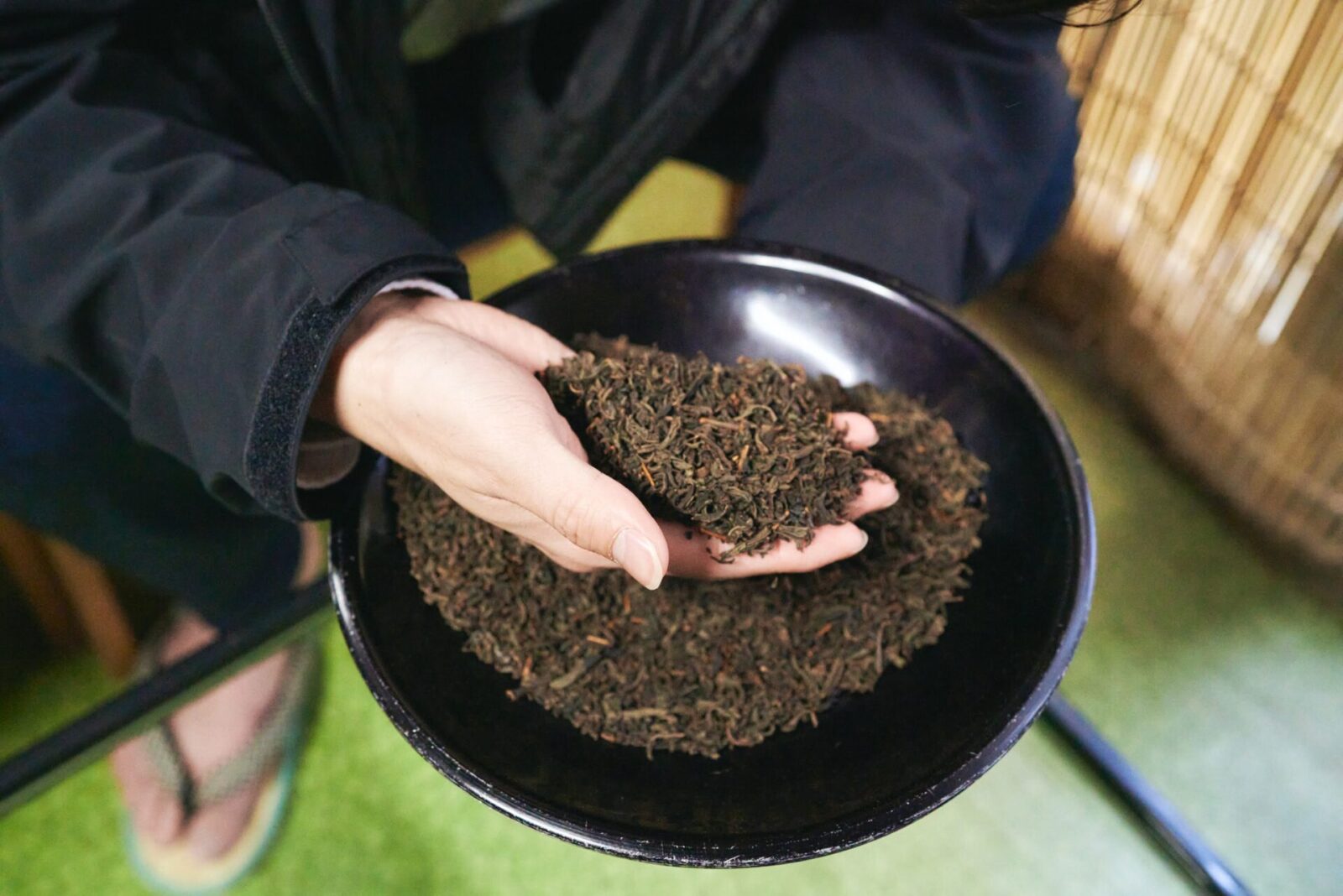
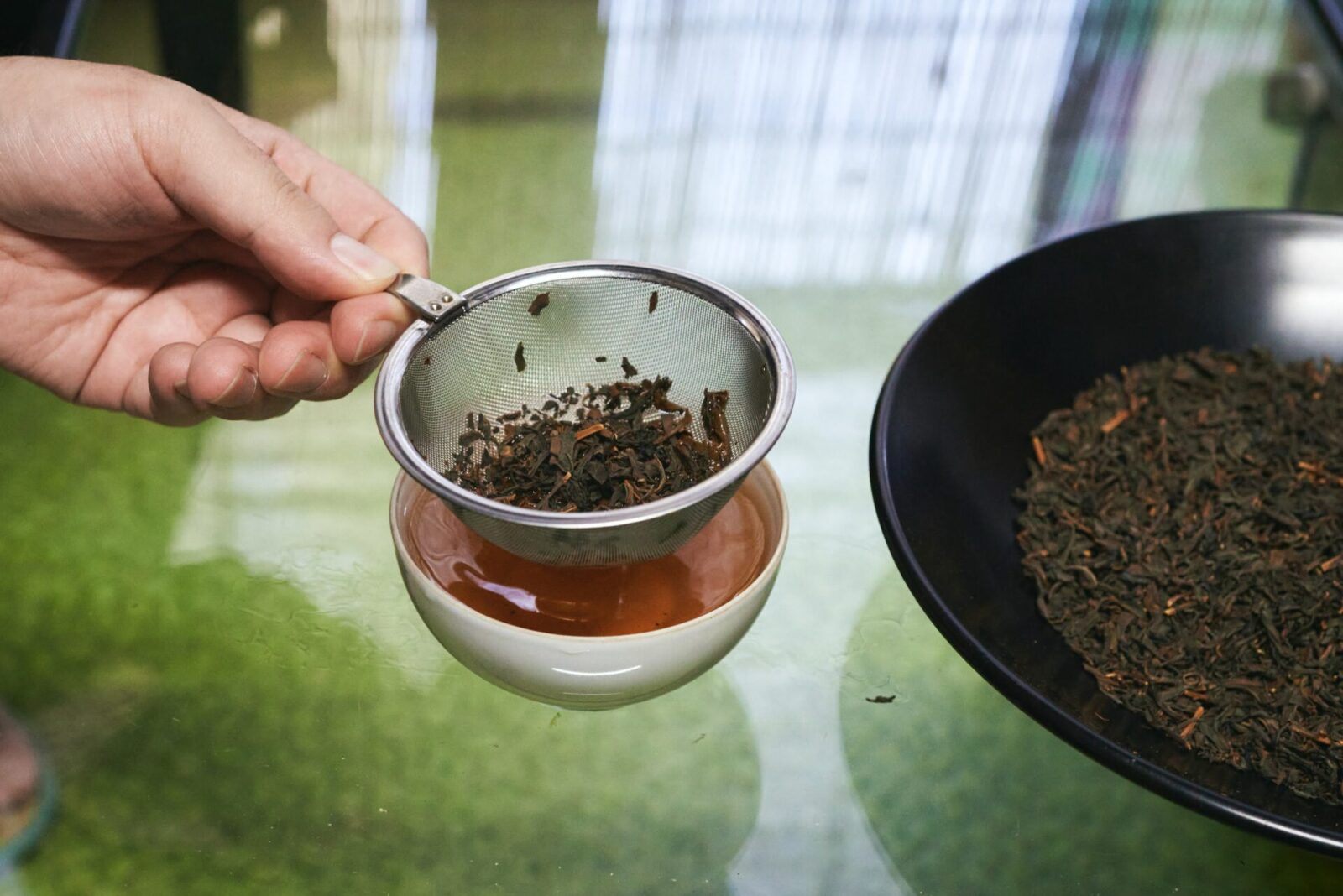
Enjoying the tea’s flavors in social settings
The Maezuru Seicha factory is located next to their shop and we were given a tour.
Inside, there are rows of large machinery that is used for Kamairi roasting.

“When we roast the tea leaves, the heat cannot be too low, nor too high or it will get burnt. The flavor of the tea is decided by the control of the heat. Our factory is not a large one, so during the tea harvesting season we keep an eye on all the roasteries very carefully.”
The process of steaming Sencha is mostly automated with the use of machines, but Kamairicha processing requires fine adjustments in heat and depth of roasting so it takes more time and labor.
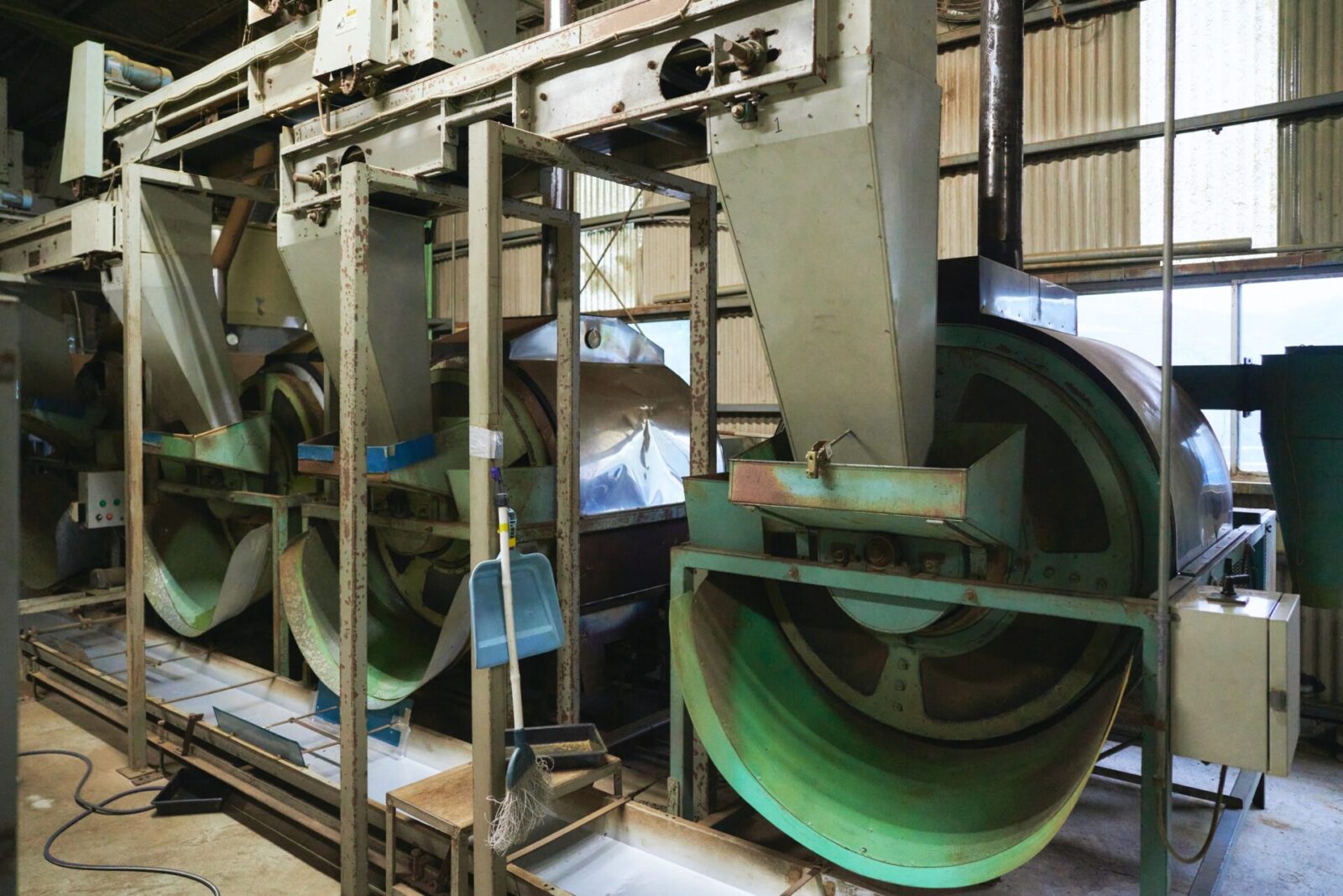
On a pillar in the factory, we found a record of Maezurui’s children’s height through the years, which made us smile. We asked Maezuru if the family business will be passed on to his children someday. Maezuru laughed and told us about his father.
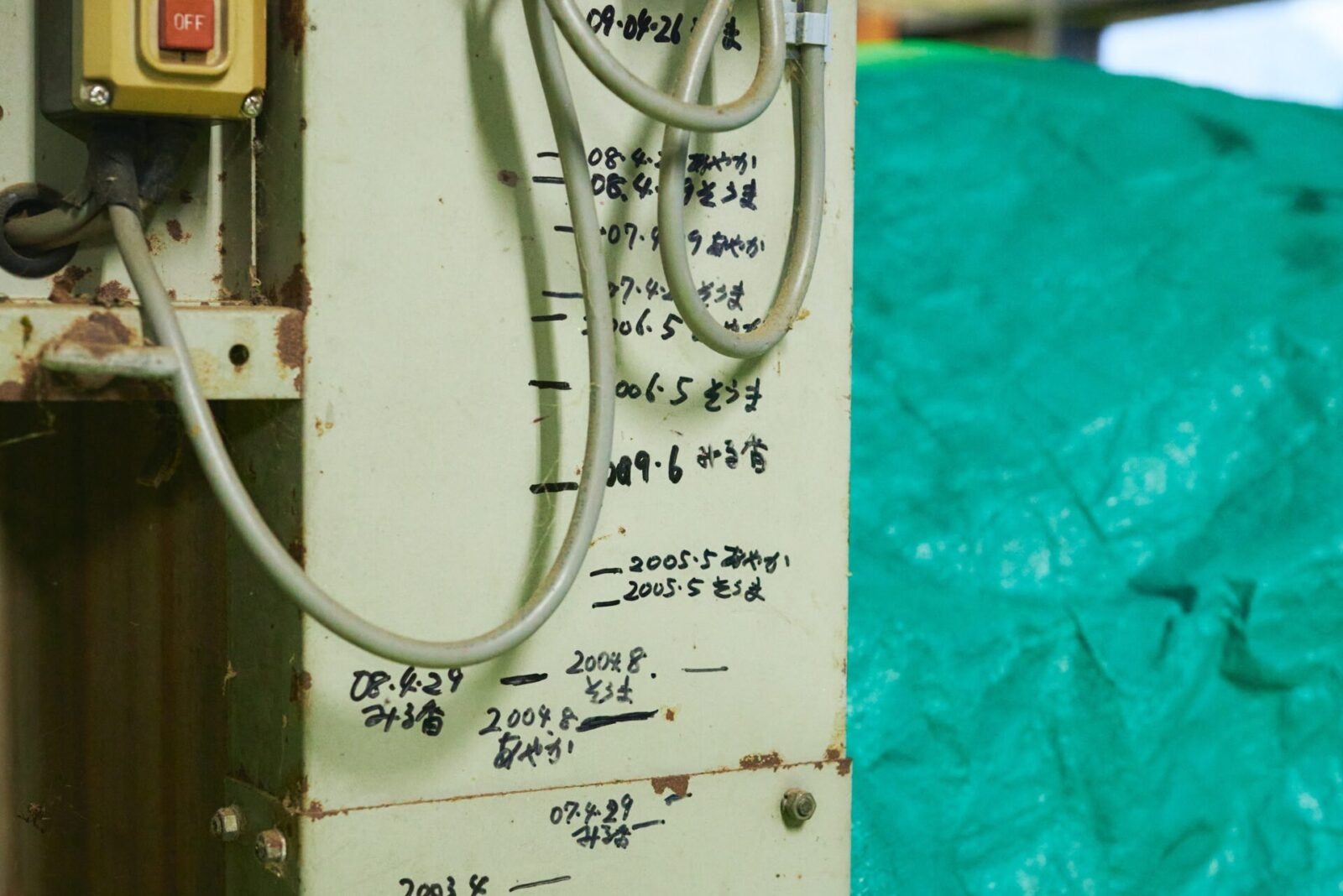
“My father was one of seven children, but he was the only son. My father initially found work at a post office in Tokyo and had no intention of taking on the family business. However, his sisters came to him one by one to convince him otherwise and I heard that he reluctantly agreed.”
“Perhaps because of that, since I was a young boy my aunts told me that I will inherit the family business when I grow up, so it was kind of ingrained in me. I like this job so that’s why I do it, but my son works in another prefecture right now and I have never said to him that I want him to take on the family business.”

There used to be about three factories in Hioki City that made Kamairicha, but now only Maezuru Seicha remains.
“Kamairicha only makes up a small portion of the overall tea market, but in the past it was a common way to enjoy tea as many people who had a tea tree in their garden would pluck a few leaves and roast them. I value having conversations with my customers and I hope that our tea will continue to be a tea that people can easily enjoy.”
Beyond the Kirishima Mountain Range and into Takaoka-cho Ichiriyama
On the next day, we traveled by car to Miyazaki Prefecture. We headed northeast through the rich mountains of the Kirishima Mountain Range.
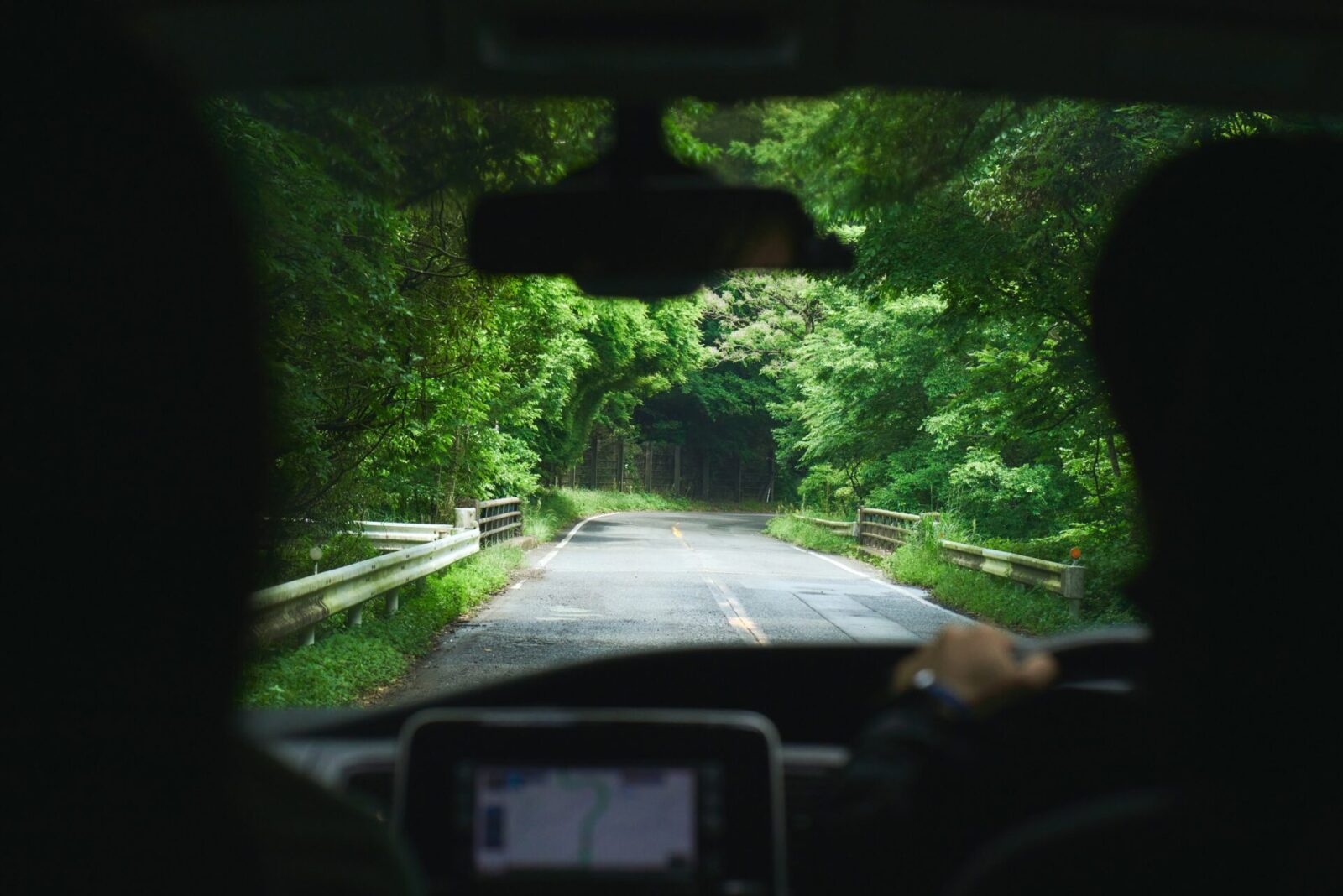
The Kirishima Mountain Range spans between Kagoshima and Miyazaki prefectures and was the first area in Japan to be designated as a national park.
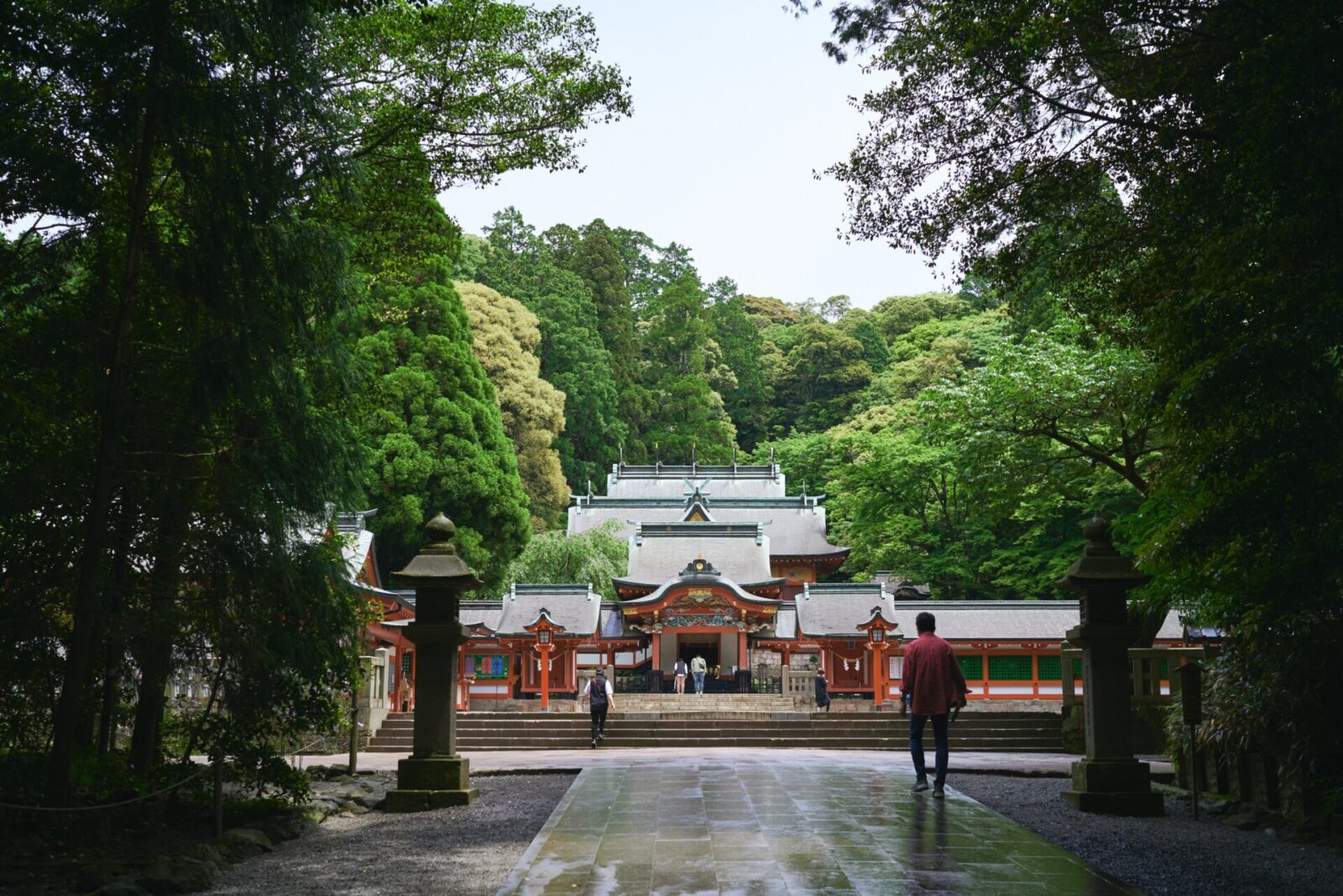
Kirishima is also known for the legend of Tenson Korin, or the story of Amaterasu’s grandchild, and the Kirishima Jingu Shrine enshrines Ninigi-no-mikoto, the heavenly grandson, as its deity.
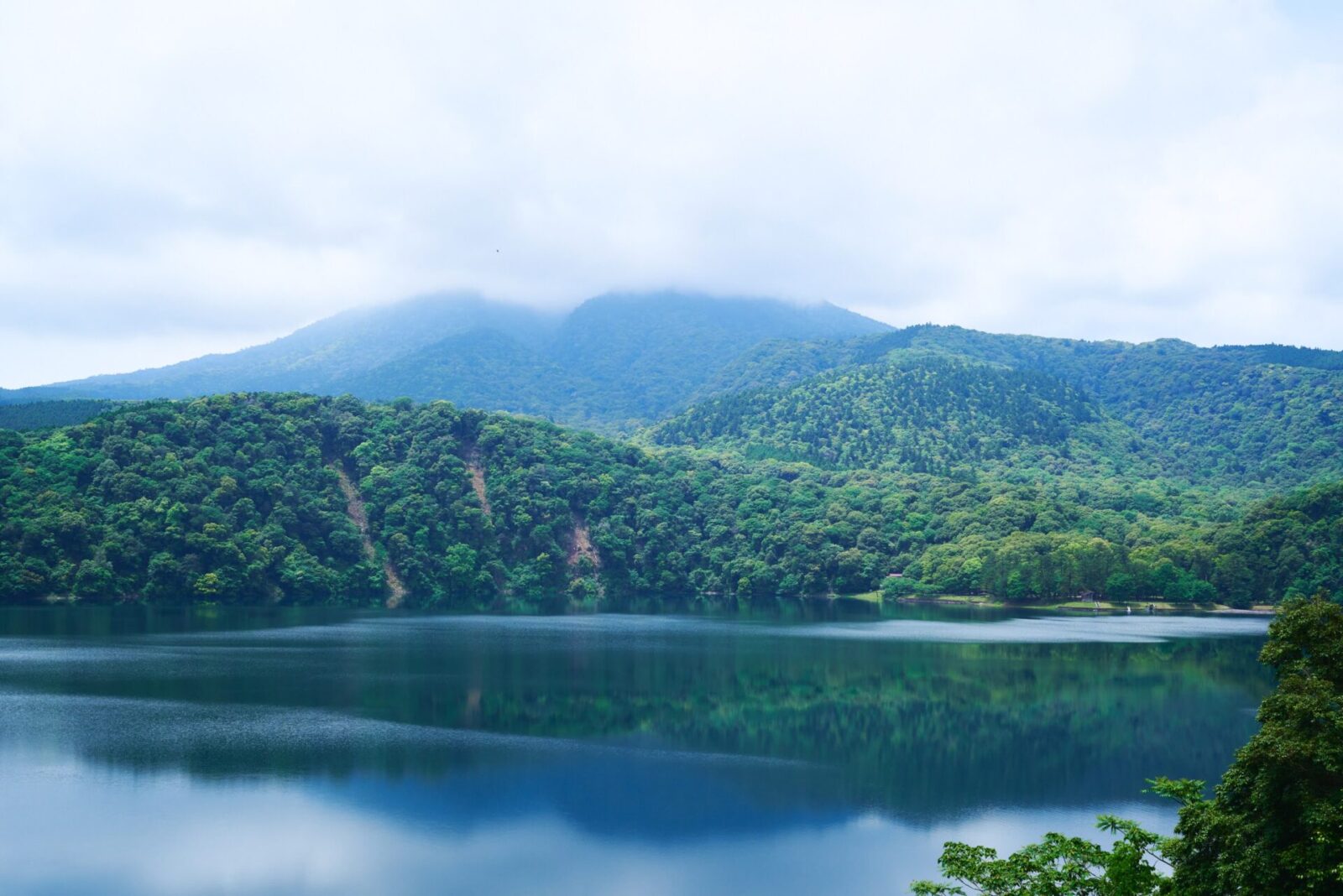
As we entered Miyazaki Prefecture Lake Miike came into view. It is the largest and deepest lake among the Kirishima volcanic mountains and it reflects the majestic Takachiho Gorge on its surface.
After an hour’s drive through the dense forest roads, the scenery suddenly changed to the beautiful landscape of vast tea plantations. We could also see the tea factories and frost preventing fans along the tea plantations.
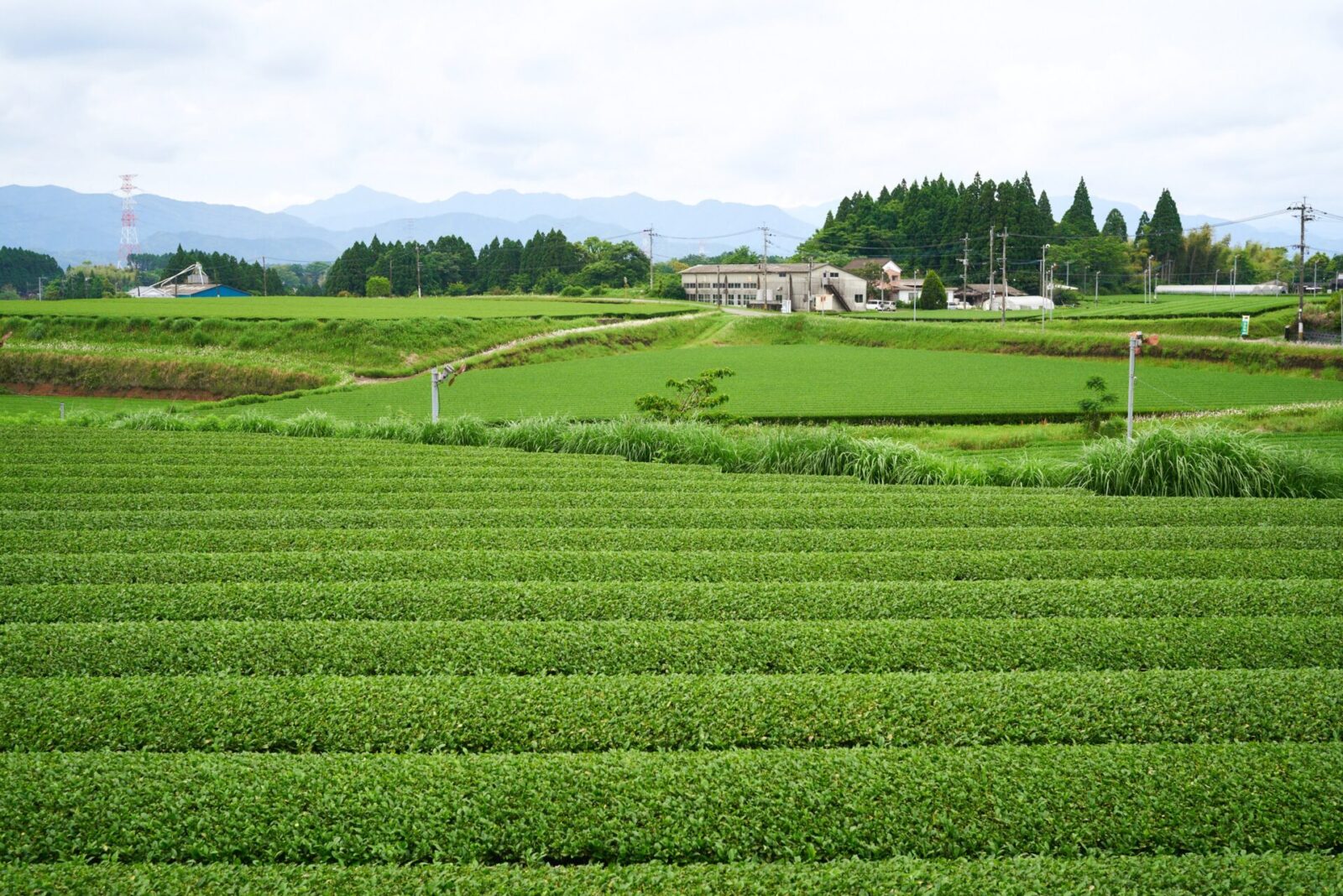
Sageishi-chaen, Miyazaki’s pioneer of organic tea farming
We arrived at Ichiriyama, Takaoka-cho, located in the westernmost part of Miyazaki City. This district has the highest number of tea producers in the region, currently at nine tea producers.
Among these tea producers, we visited Sageishi-chaen, which has been making tea since before WWII and produces all organic teas.
We spoke to Kazuharu Sageishi, whose grandfather settled into and cultivated this land in 1939.
“This area was originally woodlands which were cleared for farm production after the war.”
The following year, they planted 10 hectares of tea fields with tea plants gathered from the mountains of Miyakonojo, and that was the beginning of the Sageishi-chaen.
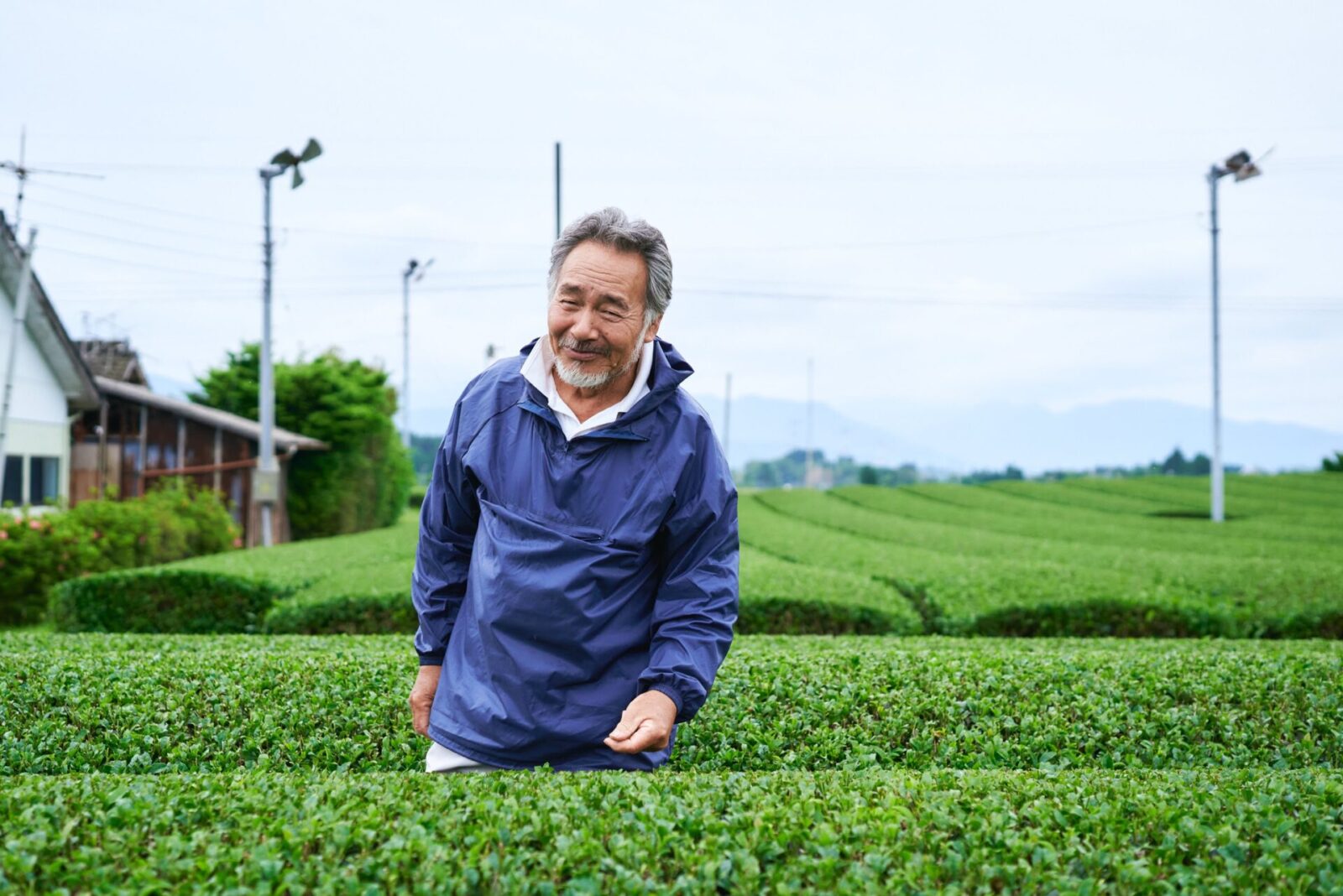
Sageishi took over the family farm in 1973. At the time, he was working for a machinery maker in Tokyo, but he returned to his hometown to inherit the family business. Ten years later, while the tea business was going well, Sageishi experienced something that changed his way of thinking about farming completely.
“When I was 33 year old, I got a health check-up through my local municipality. My blood tests came back with a high level of phosphorus, which is an ingredient in pesticides. Ever since I was a child, I had always helped with pest control work in the fields so the doctor told me that my body had accumulated a significantly high amount.”
“I was shocked to learn that I was producing something that harms the body and health. From there, I wanted to grow my tea organically.”
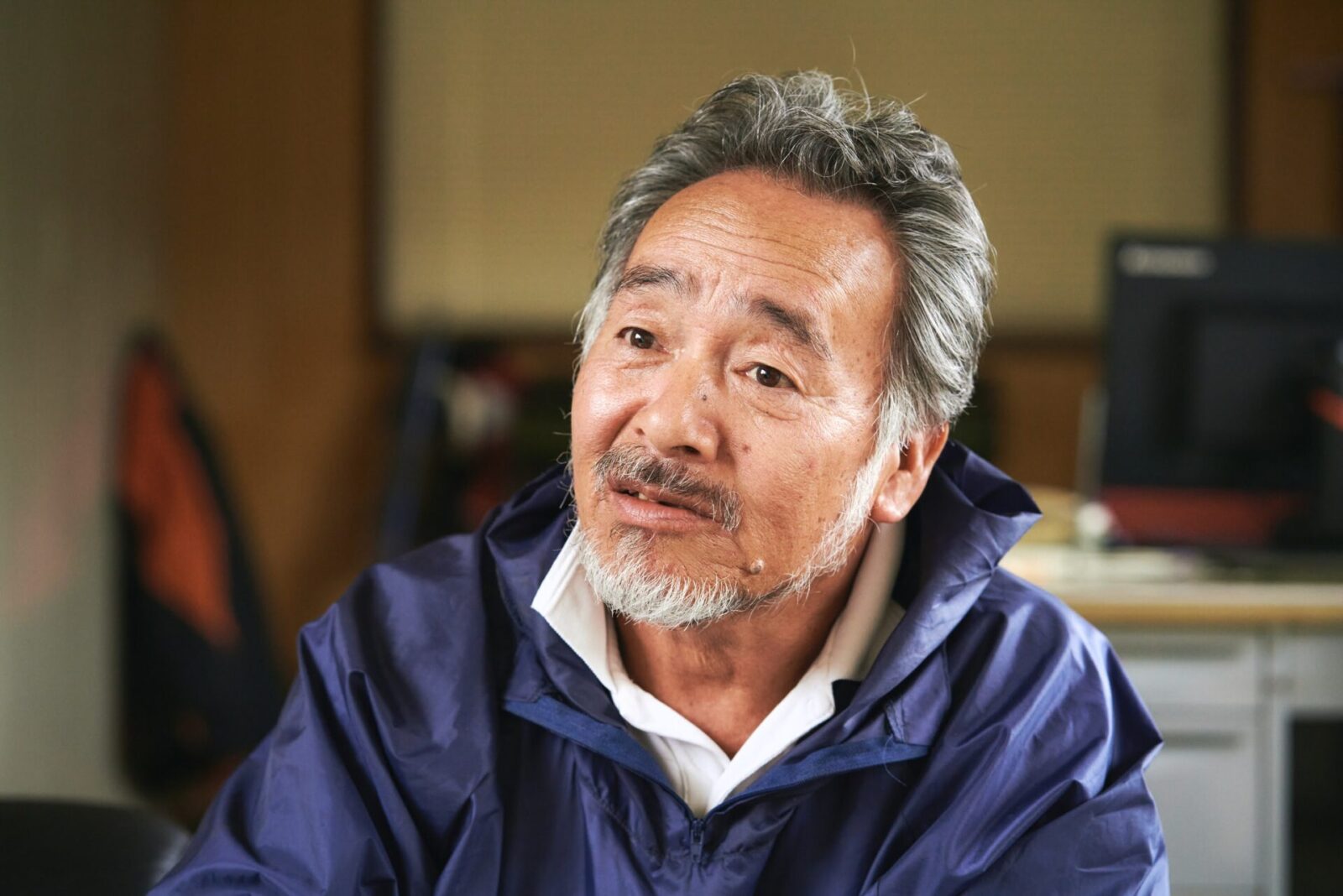
Undertaking the challenge despite opposition
Converting to organic farming meant that he had to start tea production from scratch.
The reality was that it would take time for the soil to regenerate itself so the income of the farm would fall significantly for a period of time. Even if the organic method worked out, it was unclear whether it would provide the necessary stable harvest.
Sageishi decided to first try growing organic vegetables, and when he started getting the hang of it two years later, he began organic production for his tea.
However, at the time he faced a lot of opposition from the people around him.
“They told me that only cynics refuse to use pesticides and stubbornly opposed my actions. Even if I went to any kind of social gathering, I felt left out.”
“The reason I still desired to try organic farming was because I had someone to look up to who was already doing it. The predecessor of the Nishi Tea Factory in Kagoshima was making organic tea so I consulted him often. He really encouraged me to give it a try.”
The difficulty of allowing nature to take its course
Sageishi took the advice he gathered and pressed forward with his organic tea production. After four years of starting organic methods, his harvest became better than when he was using pesticides
What was the secret behind his success?
He answered, “I let nature take its course.”
“Organic farming is difficult if you try to take too many preventative measures. Of course, if I spot an insect I will remove it by hand, but my tea plantation is five hectares in size so it is impossible to do this for the whole area. Now, I turn a blind eye even if a pest is eating the tea leaves or causing extensive damage.”
“Nature is designed very well and even invasive pests have their predators. After a week, birds and other insects will eat the invasive pests away.”
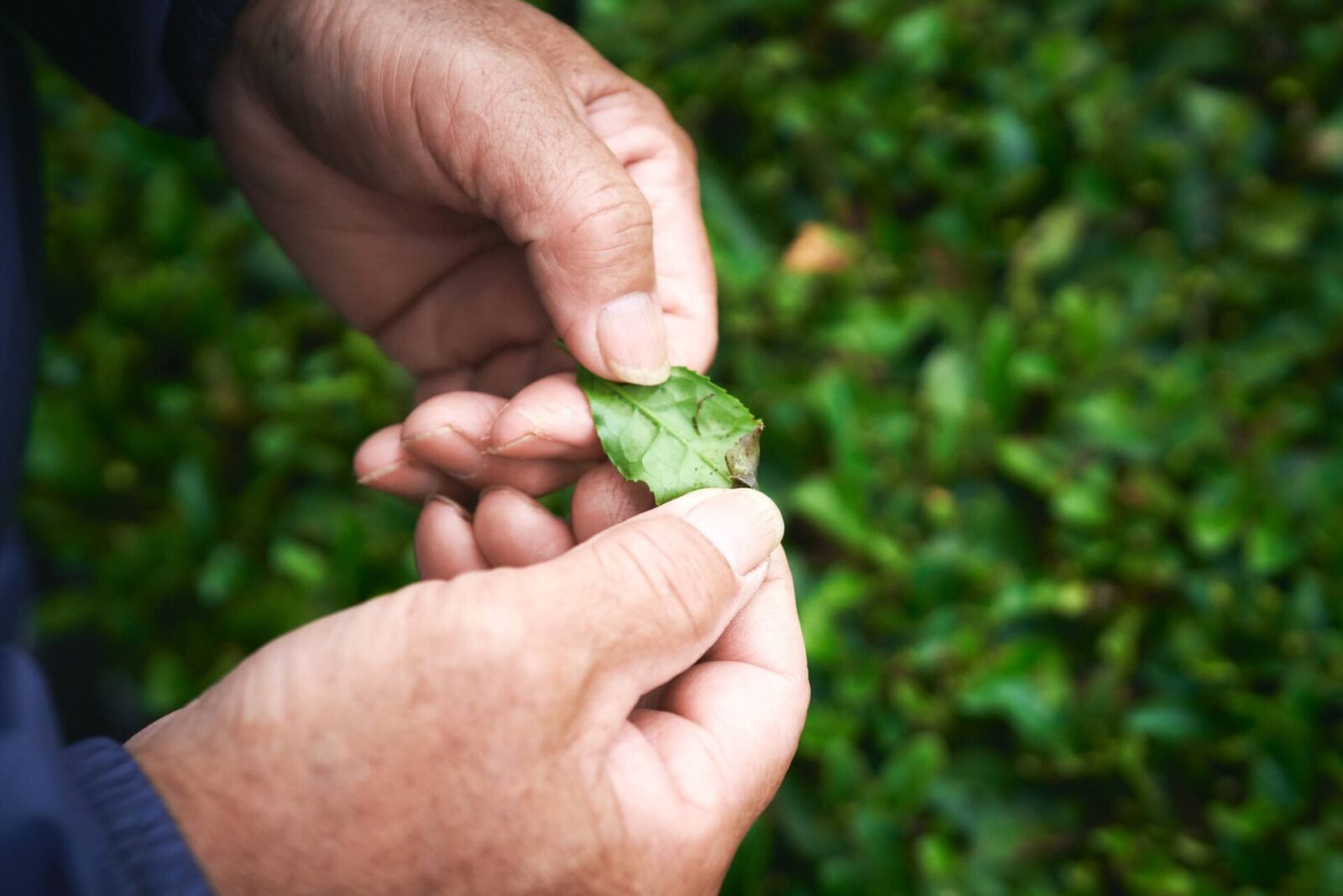
That said, it must still be difficult for a farmer to turn a blind eye to pests ravaging his tea leaves.
Still, his methods of letting nature take its course through natural predators has shown consistent results and now there are numerous tea producers who come to him for advice.
Of the eight tea producers in this district, currently seven have started organic production. Kazuharu’s courageous act of changing his production methods are now helping to lead the way for other tea producers.
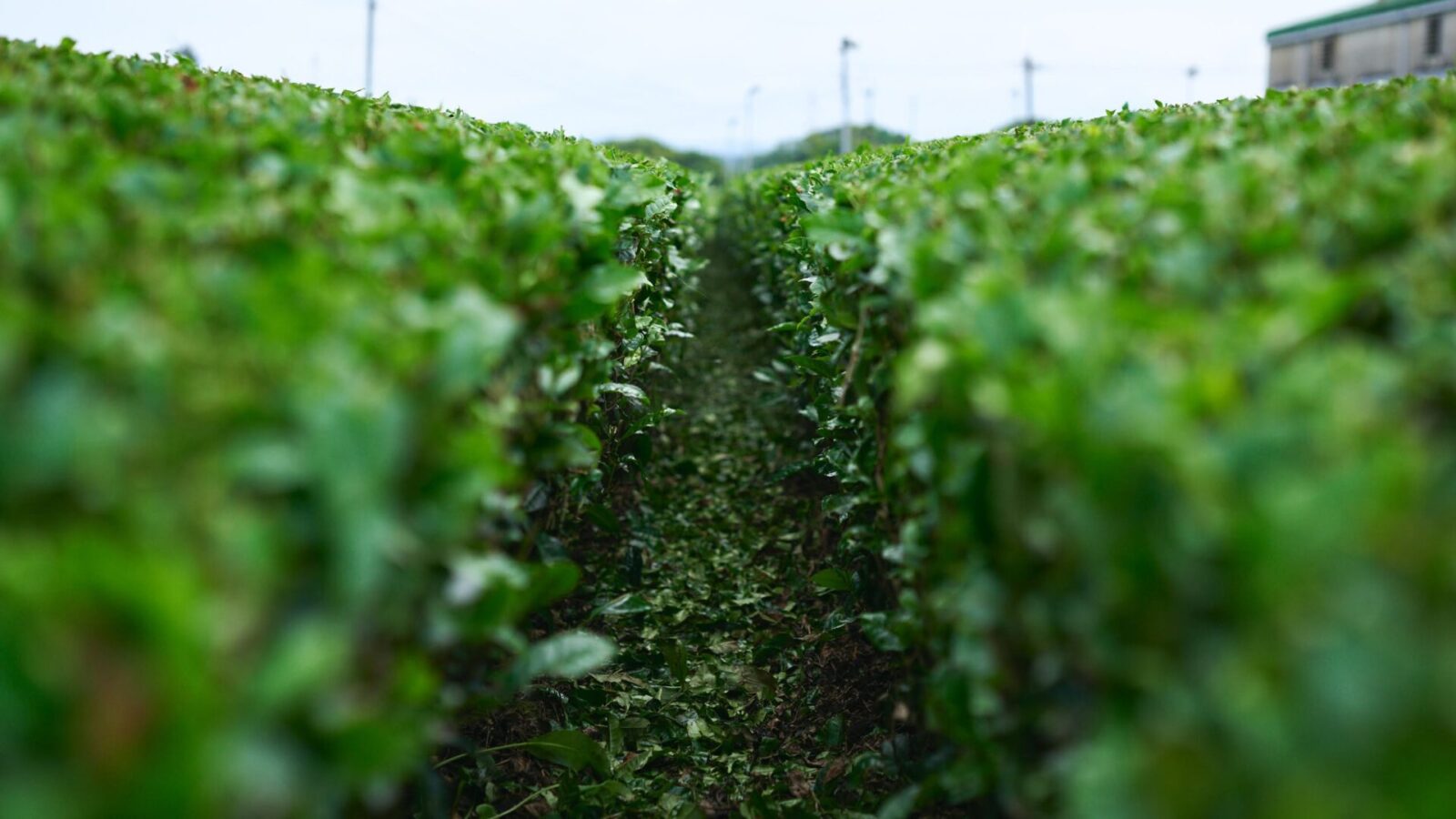
Perfecting organic farming and tea that pleases everyone’s palates
Sageishi-chaen harvested their shin-cha tea leaves from mid-April until early May.
We were served the shin-cha of the freshly processed tea leaves.
This year’s shin-chan tea leaves were softer than usual because there was little rain in the winter and too much rain in early spring. Regardless, the tea has a faint sweetness among its rich bitterness and is very delicious.
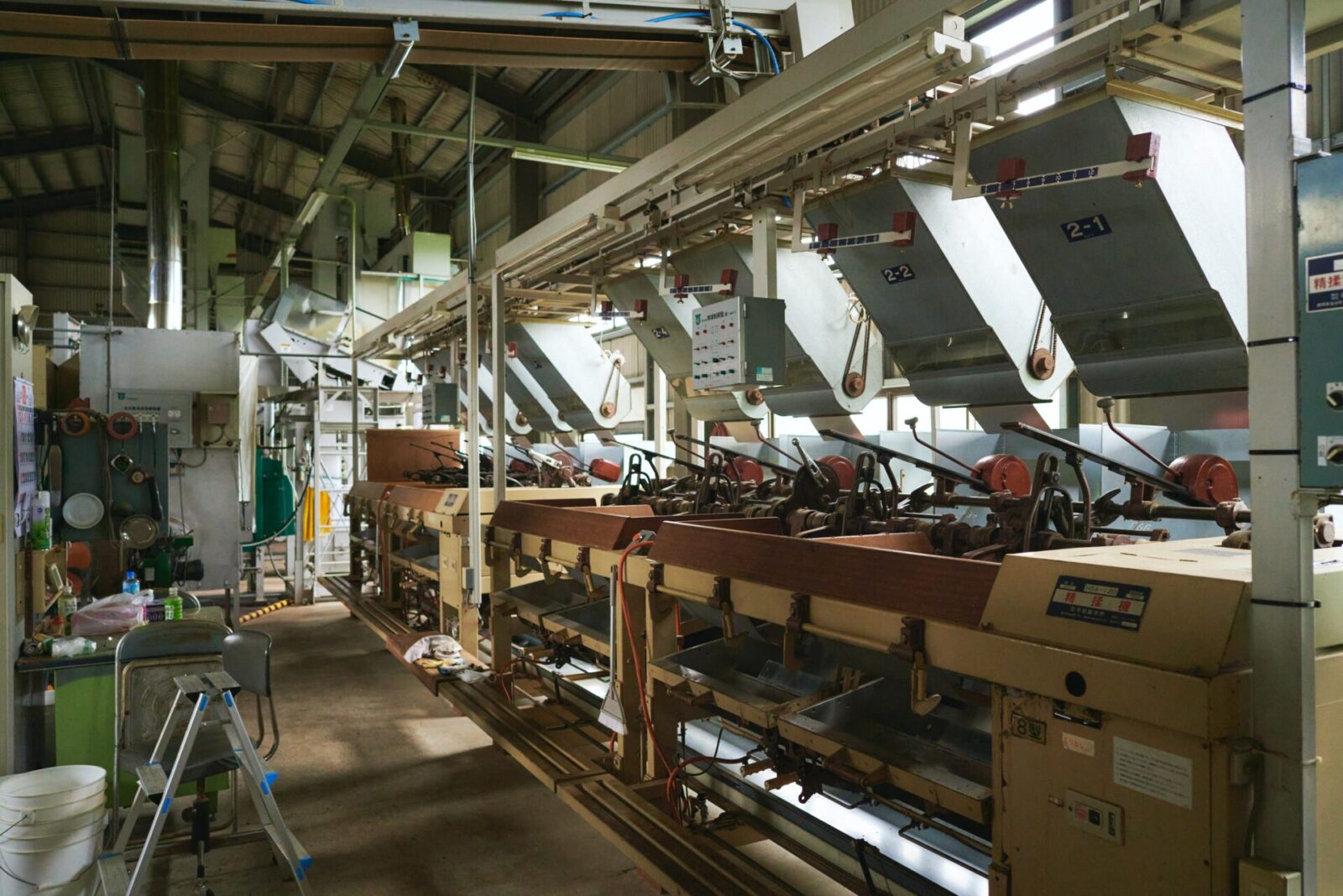
Sageishi has been making tea for 40 years now. Although he has experienced his share of twists and turns on his journey, we asked him if his methods for organic production have been firmly established. He answered, “Far from it.”
“My number one goal is to produce a tea using the power of nature that has a balanced sweetness and bitterness, that is delicious for anyone’s standards. I will use my whole life to perfect the organic production of tea.”

For this trip we visited two different tea producers, and although their production methods were completely different, they share the desire to provide consumers with delicious tea. Under this shared goal, they take on various challenges to produce the best tea possible.
Whenever we drink their tea, we remember the vast landscape of tea plantations in Kagoshima and Miyazaki and we remember the faces of Takashi Maezuru and Kazuharu Sageishi, making the experience of appreciating the tea even deeper.
Through our travels of chasing Japan’s freshest shin-cha harvest, we encountered various scenes in Japan’s tea industry.
How is shin-cha produced and delivered to us for our enjoyment?
All the shin-cha made by the leading tea producers had rich aromas and deep flavors. The teacape that we discovered behind each cup of tea was beautiful beyond words. We learned that it was the farmers’ undying love for tea that made it possible for us to experience our rich moments with tea.
Photo: Umihiko Eto
Translation: Sophia Swanson
Local writer / editor. Born in Osaka, currently living in Fukuoka. Worked in advertising at Recruit Co. before becoming freelance.
Travels around Japan interviewing and writing about regional communities, crafts, and relocating. Involved in various regional projects and is a voice of the local people and their work. Author of Hanro no Kyoukasho(EXS Inc.)
Editor. Born and raised in Kagoshima, the birthplace of Japanese tea. Worked for Impress, Inc. and Huffington Post Japan and has been involved in the launch and management of media after becoming independent. Does editing, writing, and content planning/production.
